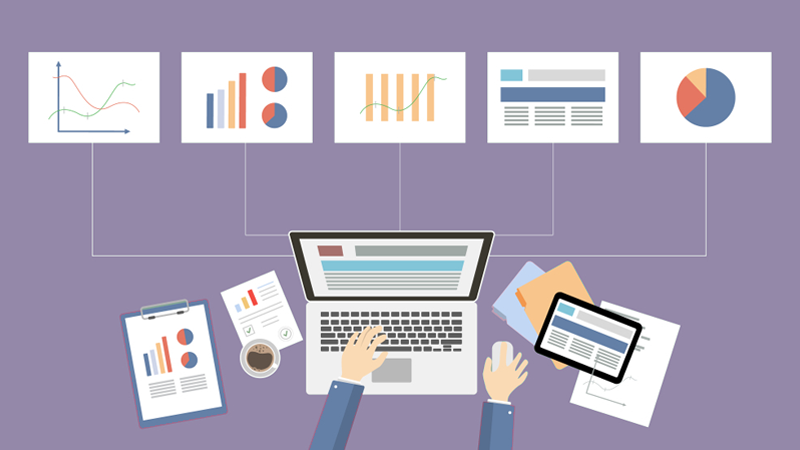If you’ve ever wondered when appropriate to use a pie chart, wonder no more. This article will cover when to use a pie chart and other charts. Keep reading to learn more.
When to Use Pie Charts
It would help if you often used pie charts, employing a data visualizer to show the whole relationship between different groups or relaying proportions via charts. Some of these instances include comparing parts of a whole, displaying data organized in percentages, and showing the change in data over time. Pie charts have different uses than bar charts and line charts, so you want to verify the best choice for your graphical uses.
When comparing parts of a whole, pie charts are often the best way. They show how much of a whole each piece takes up. So, for example, if you wanted to know what percentage of people in a state were Republicans, you could use a pie chart to find out. It would be difficult to determine this by looking at a list of numbers or different category data points.
Pie charts are also suitable for displaying data that is organized in percentages. This is because they can easily show how much of the data is made up of different types of information. For example, if you wanted to know what percentage of people think that taxes are too high, you could use a pie chart. It would be difficult to determine this by looking at a list of numbers.
Finally, you can use pie charts to show the change in data over time. They can easily show how the data has changed since different periods have been measured. For example, if you wanted to know how many people have migrated from one country to another over time, you could use a pie chart to find out.
The Different Types of Pie Charts
Pie charts are a graphical representation of data where the total size of each slice is represented by its length on the horizontal axis. You should use pie charts to compare parts of a whole. They are usually used to represent percentage values but can also show proportions. There are three main types of pie charts: circle, sector, and exploded.
Circle pie charts have all the slices touching one another, sector pie charts have the pieces separated, and exploded pies have some portions detached from the rest of the graph. Circle pies are best for small amounts of data (up to 10), sector pies work well for larger data sets (10-30), and exploded pie chart designs can be used for massive data sets (more than 30).
When should you use a pie chart? If you need to compare parts of a whole, a pie chart is your best option. You should use a circle pie for small data sets, sector pies for medium data sets, and exploded pies for large data sets.
Pie Charts vs. Bar Graphs
Pie charts are used to display the relationship of parts to a whole. They are typically used when there are only a few categories or when the classes are mutually exclusive. For example, you might use a pie chart to show how much money people have saved in different savings accounts.
Bar graphs are used to compare values between different items. They can be used when there is more than one category and when the categories are not mutually exclusive. For example, you might use a bar graph to compare the number of men and women who work in different industries.
Use Pie Charts to Leverage Different Groups of Data.

Pie charts often display how a part of a whole is divided up. They can help compare parts of a whole or show change over time. So, when should pie charts be used?
When you want to compare the size of different parts of a whole, pie charts are a good choice. They make it easy to see which part is the largest and the smallest. For example, if you wanted to know what percentage of people in your town bike to work, you could create a pie chart with the different modes of transportation as slices. This would make it easy to see that most people in your town drive to work.
Another time pie charts can be helpful is when you want to show how something has changed over time. For example, if you were studying climate change, you might use pie charts showing how much ice has melted each year for the last ten years. This would give you an idea about how quickly the climate is changing.
When should pie charts be used? Altogether, you should use them to compare a part to the whole or compare two or more different totals. Then, put these charts to good use using graphic methods, historical data, and different slices to organize your business metrics and processes.
